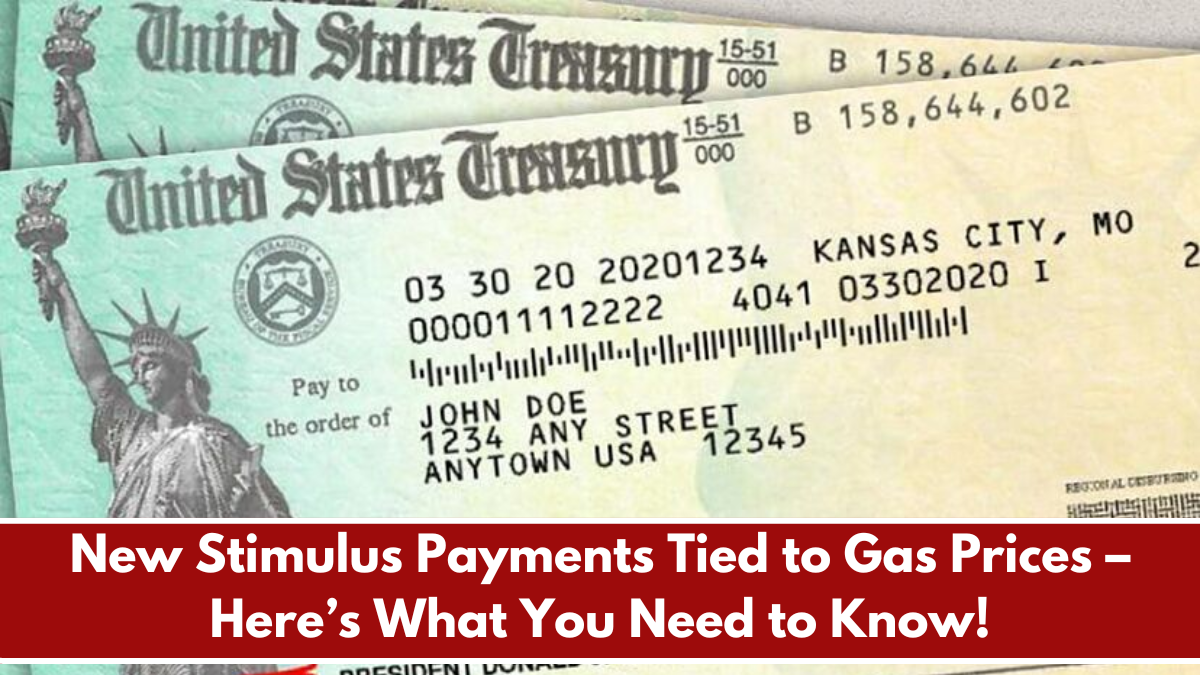As gas prices surge once again across the U.S., lawmakers have introduced a new stimulus initiative directly tied to the cost of fuel. Designed to ease the burden of rising transportation expenses, these gas-price-linked stimulus payments could bring extra cash to your bank account—especially if you’re a commuter, delivery driver, or low-to-middle-income worker. Here’s everything you need to know about this timely and targeted relief effort.
What Are the Gas Price Stimulus Payments?
The gas price stimulus program is a proposed relief payment that automatically adjusts based on national average gas prices. If fuel costs remain above a certain threshold—typically $3.75 per gallon—eligible individuals will receive monthly or one-time payments to help cover increased expenses. The idea is simple: when gas prices spike, the government steps in to help offset the impact on everyday Americans.
Who Qualifies for the Payments?
Eligibility for the gas-price stimulus is largely based on income, location, and vehicle use. People who rely on driving for work—such as gig economy workers, truck drivers, or rural commuters—are prioritized. However, any taxpayer earning under a specific income threshold may qualify if they meet certain criteria related to transportation costs and fuel spending.
Table: Gas Price Stimulus Program Overview
| Criteria | Details |
|---|---|
| Payment Amount | Up to $150/month (variable based on gas prices) |
| Eligibility | Income <$80,000 (individual) or <$160,000 (joint) |
| Priority Groups | Drivers for work, rural residents, low-income |
| Activation Trigger | National gas price exceeds $3.75/gallon |
| How to Apply | Automatically via tax return or online portal |
How to Get Your Payment
Most eligible recipients won’t need to apply manually. If you’ve filed your most recent tax return, the IRS can process your eligibility and issue payment automatically—just like with previous stimulus checks. In some cases, especially for self-employed or gig workers, there may be an online application to verify income and vehicle use.
With transportation costs eating into household budgets, this gas-tied stimulus could bring much-needed relief. If you’re someone who hits the road every day, now’s the time to make sure your tax info is up-to-date and your fuel receipts are tracked. These payments might not last forever—but while they do, they could make a big difference.
FAQ’s:
1. When will the gas stimulus payments start?
Payments will be triggered when national gas prices exceed $3.75/gallon. The rollout could begin as early as Summer 2025, depending on market trends and final legislation.
2. Do I need to apply for the payment?
Most individuals will receive payments automatically if they’ve filed a recent tax return. Some may need to apply through a special portal, especially if they are self-employed or didn’t file taxes.
3. Can part-time drivers or gig workers qualify?
Yes, gig workers such as rideshare drivers and food delivery workers are included in the eligible group, especially if a significant portion of their income relies on driving.
4. Is this payment monthly or one-time?
It can be either. If gas prices remain high for an extended period, monthly payments may be issued. Otherwise, a lump sum could be distributed.
5. What if gas prices drop again?
If gas prices fall below the designated threshold, the payments will pause until prices rise again. This structure ensures the program only activates during price spikes.
